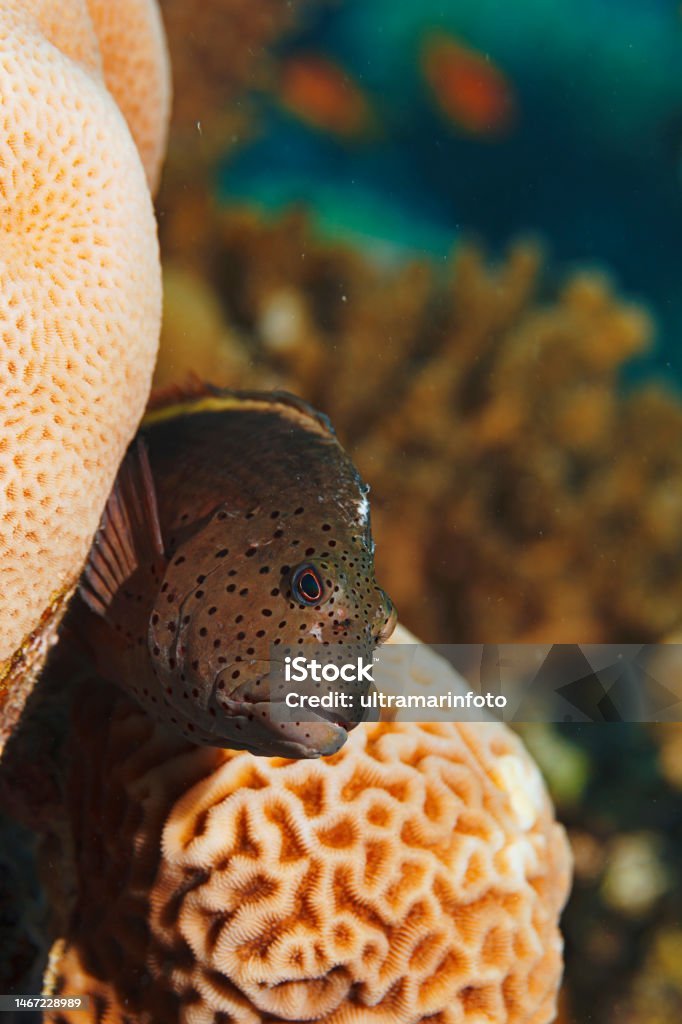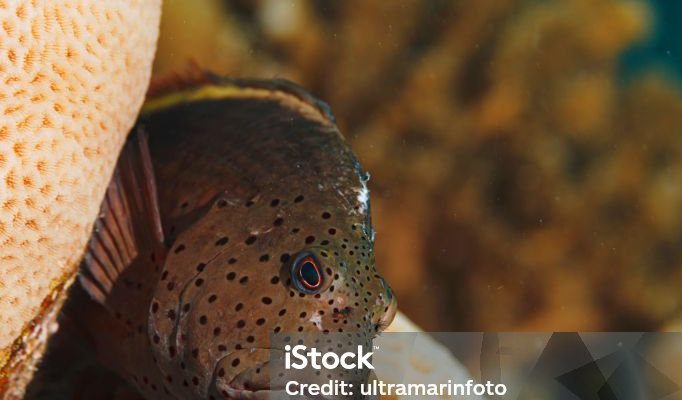
Imagine being in a giant ocean swimming pool, where every corner is full of surprises. That’s pretty much what a grouper faces every day. With their wide mouths and robust bodies, groupers have mastered the art of hunting and defending themselves. It’s incredible to see how evolution has shaped these fish into confident predators and masters of their habitat.
So, let’s dive in and explore the cool adaptations that help groupers rule the underwater world!
1. Unique Body Shape and Size
One of the first things you’ll notice about groupers is their distinctive body shape. They tend to have a stout, elongated body that helps them maneuver through rugged underwater landscapes. Think of them like tank-like vehicles gliding through the ocean. This robust physique allows them to navigate rocky reefs and tight spaces with ease.
The size of groupers can also be quite impressive. Some species can grow really large, reaching up to 8 feet in length! This size not only helps them fend off predators but also makes them formidable hunters. Imagine having a larger-than-life presence in your environment—it definitely gives you an edge when it comes to finding food or scaring off potential threats.
Their body design isn’t just for show. It plays an important role in their ability to survive in diverse habitats, from coral reefs to submerged rocks. The combination of shape and size makes them both resilient and adaptable.
2. Powerful Jaws for Hunting
Let’s be honest—one of the most impressive features of the grouper is its strong jaws. These fish have powerful mouths filled with sharp teeth, perfect for catching and holding onto slippery prey. When you see a grouper open its mouth, it’s almost like watching a vacuum cleaner suck up food from the water.
Their hunting technique is pretty clever too. Groupers often use a method called ambush predation. They hide among rocks or coral and wait for the perfect moment to lunge forward and snatch up a meal. This strategy not only saves energy but also increases their chances of catching quicker fish. Imagine being the stealthy hunter in a game of hide-and-seek—suddenly jumping out with a big surprise!
Understanding how groupers use their powerful jaws gives us insight into their role in the ecosystem. As skilled hunters, they help regulate fish populations, ensuring a balanced underwater community.
3. Coloration for Camouflage
Have you ever noticed how some fish seem to disappear into their surroundings? That’s largely thanks to their coloration. Groupers come in various hues, with many sporting patterns that help them blend in with the coral reefs and rocky sea floors. This camouflage is critical for both hunting and protection.
When groupers are resting or stalking prey, their colors can make them nearly invisible to both predators and potential meals. It’s like wearing the perfect disguise to avoid detection! This ability to change coloration helps them to avoid becoming someone else’s dinner while also getting a tasty meal themselves.
The role of coloration doesn’t stop there. It’s also a form of communication among groupers. Bright colors can signal readiness to mate or establish territory. So, their outer appearance plays a vital role in their daily lives.
4. Social Behavior and Lifestyle
Groupers are not just solitary creatures; they exhibit interesting social behaviors that aid in their survival. Many species of grouper are known to form groups, or schools, which can enhance their protection against predation. Imagine having a squad to rely on—there’s safety in numbers!
These social structures allow groupers to work together, especially when hunting. They can coordinate their movements to herd schools of smaller fish, making it easier to catch dinner. It’s like an underwater team sport where everyone plays a crucial role.
Additionally, some groupers are territorial and will defend their space against intruders. This behavior helps ensure they have access to food and breeding areas. Being both social and territorial ensures their survival and reproduction in the wild.
5. Adaptation to Environmental Changes
Groupers have shown remarkable resilience when it comes to adapting to changes in their environment. Whether it’s rising water temperatures or changes in food availability, these fish have evolved strategies to cope with stressors. They can migrate to different areas if their usual habitat becomes unsuitable.
For instance, if a coral reef is damaged, groupers may seek out new reef systems or explore deeper waters. This flexibility in habitat choice is crucial for their survival. Just think about how you might adjust your routine if your favorite café suddenly closed—it’s all about finding new options.
These adaptations are essential in the face of climate change. As ocean conditions shift, groupers’ ability to adapt will play a vital role in their future. Conservation efforts that focus on protecting their habitats are more important than ever, ensuring that these fish can continue thriving.
6. Breathing Adaptations
Breathing is essentially a survival skill underwater, and groupers have special adaptations that help them do just that. Like all fish, they extract oxygen from water through their gills. However, groupers can also pump water over their gills even when they’re not swimming. This ability is particularly useful when they’re resting in stationary positions among corals.
Think about it like this: if you could breathe without having to run around, wouldn’t you? This adaptation allows groupers to conserve energy while still getting the oxygen they need to thrive. It’s a perfect example of how evolution has crafted their way of life.
Moreover, their gill structure is well-developed to maximize oxygen absorption. This ensures they stay active and healthy in their underwater environment, contributing to their overall success as a species.
7. Sensory Adaptations
Groupers are equipped with sensory adaptations that help them navigate their environment effectively. Their eyes are highly developed for vision, enabling them to spot prey even in murky waters. Imagine having super-vision in a playful game of tag—groupers can see where others can’t!
They also have a lateral line system, which is a series of sensory organs that run along their bodies. This unique adaptation allows them to detect vibrations and movements in the water. It’s like having a sixth sense for water currents and approaching fish. This ability helps groupers locate food sources and avoid danger, adding another layer to their survival toolkit.
In the world of underwater life, groupers are truly remarkable creatures. Their adaptations, from body shape and coloration to social behaviors and sensory abilities, help them thrive in diverse and changing environments. Understanding these adaptations offers a glimpse into the fascinating lives of these fish and emphasizes the importance of preserving their habitats.
So, next time you dive into the ocean or watch a nature documentary, remember the grouper. With their unique skills and resilience, they represent the beauty of evolution in action. It’s a vivid reminder of how life adapts and flourishes, even in the depths of the sea. This underwater superhero continues to mesmerize us all!

